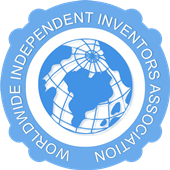- BY Admin
- POSTED IN Articles, Fără categorie
- WITH 0 COMMENTS
- PERMALINK
- STANDARD POST TYPE

1. Patents provide incentives for economically efficient research and development (R&D). Many large modern corporations have annual R&D budgets of hundreds of millions or even billions of dollars. Without patents, R&D spending would be significantly less or eliminated altogether, limiting the possibility of technological advances or breakthroughs. Corporations would be much more conservative about the R&D investments they made, as third parties would be free to exploit any developments. This second justification is closely related to the basic ideas underlying traditional property rights.
2. In accordance with the original definition of the term “patent,” patents facilitate and encourage disclosure of innovations into the public domain for the common good. If inventors did not have the legal protection of patents, in many cases, they would prefer or tend to keep their inventions secret. Awarding patents generally makes the details of new technology publicly available, for exploitation by anyone after the patent expires, or for further improvement by other inventors. Furthermore, when a patent’s term has expired, the public record ensures that the patentee’s idea is not lost to humanity.
3. In many industries (especially those with high fixed costs and either low marginal costs or low reverse engineering costs — computer processors, software, and pharmaceuticals for example), once an invention exists, the cost of commercialization (testing, tooling up a factory, developing a market, etc.) is far more than the initial conception cost. (For example, the internal “rule of thumb” at several computer companies in the 1980s was that post-R&D costs were 7-to-1). Unless there is some way to prevent copies from competing at the marginal cost of production, companies will not make that productization investment.
One effect of modern patent usage is that a small-time inventor can use the exclusive right status to become a licensor. This allows the inventor to accumulate capital from licensing the invention and may allow innovation to occur because he or she may choose to not manage a manufacturing buildup for the invention. Thus the inventor’s time and energy can be spent on pure innovation, allowing others to concentrate on manufacturability.




